.
.
Given the current Black Lives Matter protests, coupled with the upcoming presidential indoor “rally” in Tulsa (in the middle of a pandemic, no less), it seems like a good time to revisit an interview I conducted with Tim Madigan, author of The Burning: Massacre, Destruction, and the Tulsa Race Riot of 1921, a terrific history of that city’s race riot that wiped out an entire black neighborhood, and left hundreds dead.
My hope when I produced this interview in 2002 was that it would shed some light on this little-known brutal massacre, and help understand the pain and anger so entrenched in the American story.
Eighteen years later, that remains my hope.
.
.
___
.
.
.
.
.
…..On the morning of June 1, 1921, a white mob numbering in the thousands marched across the railroad tracks dividing black from white in Tulsa, Oklahoma, and obliterated a black community then celebrated as one of America’s most prosperous. Thirty-four square blocks of Tulsa’s Greenwood community, known then as the “Negro Wall Street of America,” were reduced to smoldering rubble.
…..Fort Worth Star Telegram writer Tim Madigan first read about the Tulsa Race Riot in the winter of 2000. “A uniquely prosperous community of African Americans – literally thousands of homes, businesses, churches, and schools – had been obliterated by a white mob,” Madigan writes, and wonders “How could we not have known of such a thing?” Soon after, Madigan traveled to Tulsa, where he interviewed a handful of elderly African Americans, people who recalled the terror-filled hours of June 1, 1921, when the whites swarmed over the railroad tracks separating white Tulsa from black.
…..As he researched The Burning, Madigan came to realize his vast ignorance of “the terror and hardship that came with emancipation – the murderous rides of the original Ku Klux Klan; the reign of Jim Crow; thousands of lynchings; racial hatreds that were not only tolerated, but widely condoned and endorsed at the highest levels of our society by people and institutions in the North and South alike.”
…..“I felt from the beginning that I was being provided with a piece of history that would make a tremendous difference in the way I look at the world, and the way I look at other people. This book was about an opportunity to perhaps share that epiphany with other people,” Madigan told us. This story is finally being told, and Madigan spreads the word in our exclusive interview, which took place on April 12, 2002, and hosted by Jerry Jazz Musician publisher Joe Maita.
.
.
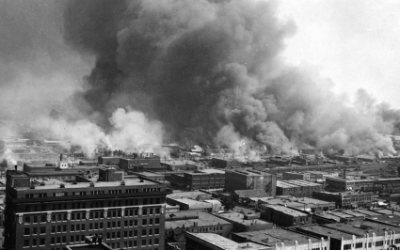
The Greenwood section of Tulsa, Oklahoma on fire during the race massacre of May 31 – June 1, 1921
.
____
.
.
JJM Before I get into the interview, I would like to read something from your book. You write in the introduction to The Burning, “For me, work on this book has been a life-changing odyssey. Early in the process, I began to suspect that a crucial piece remained missing from America’s long attempts at racial reconciliation. Too many in this country remained as ignorant as I was. Too many were just as oblivious to some of the darkest moments in our history, a legacy of which Tulsa is both a tragic example and a shameful metaphor. How can we heal when we don’t know what we’re healing from? I hope this book contributes in some small way toward the broader understanding. Such is the spirit in which it was written.” And, it is in this spirit I wish to publish this interview. Thanks for participating.
As a reader who spent the last week getting to know the tragic events that occurred in Tulsa in 1921, I was deeply affected by what I learned. How did the writing of this book affect you personally? Was it a difficult assignment for you?
TM Well, it was not necessarily difficult emotionally. From the very start of this project, it has been an extraordinary labor of love for me. I found the subject matter, in addition to being appalling, very compelling. I felt from the beginning that I was being provided with a piece of history that would make a tremendous difference in the way I look at the world, and the way I look at other people. This book was about an opportunity to perhaps share that epiphany with other people. Part of my strengths and success as a newspaper journalist, I think, is my “commonness” or my “ordinariness.” I have come to believe that if I am thinking or feeling or not knowing something, there are likely to be millions of other people out there in the same boat. To take that to the next step, that if I was so ignorant about what happened in Tulsa in 1921 and the period in our history that gave birth to that, I knew there were millions of other people out there who were similarly ignorant. If they knew about this period, it would make a huge difference in their lives. I feel very strongly that the subject matter of this project is extremely compelling. During the course of writing, there was never a point in the process where I got stuck or discouraged. It just flowed from beginning to end. I think that in itself is testament to the fact that I was, for whatever reason, meant to do the work.
JJM What sources did you use for the book?
TM A variety of different sources. I interviewed as many of the living survivors, between 20 and 25, that I possibly could. The problem with that, or the limitations, were that most of these people were young children when this happened. Their recollections were in large part shaped by how old they were. A lack of maturity kind of context in which to put this. The opening anecdote of the book, about a young girl being awakened early in the morning by her mother as this event unfolds, is drawn from one of those interviews. I also made a very thorough review of the two major Tulsa papers. Even though they each had their own philosophical and political slants to things, I found the straight news reporting to be invaluable in terms of the sights and sounds and smells and mood of the city while this was going on. Subsequent to the event, the national papers came in for a week or so and covered it pretty thoroughly. In the last thirty years or so, there have been people who have made an attempt to preserve the recollections of people who were young adults or teenagers when this happened. Their testimony, either in transcripts or on tape is available, so I made use of them. There were a variety of different court transcripts from court cases contemporary to that time that sprang up as a result of what happened in Tulsa. One was the criminal case against the Tulsa police chief. Another one was a law suit stemming from someone trying to make an insurance claim in which there was a great deal of detailed testimony about the events of that day. So, I used a combination of those resources.
JJM Talk a little about what Tulsa was like prior to the rioting.
TM Tulsa was an extraordinary community in many respects. For one thing, it was a new city. Until the 1905 – 1910 period, it was an isolated little village of no more than 1,000 people in what was still Indian Territory. Then, in that time period, there was a huge oil find just south of Tulsa. Almost overnight Tulsa was transformed into an oil capital. By the time of the rioting in 1921, Tulsa was approaching 90,000 people. It was by most accounts a uniquely lawless place. It had the quintessential oil boomtown spirit and an “anything goes” mentality, and not enough civilized influences. The law enforcement there, if it existed at all, was fairly corrupt. On the other side of the tracks, on the north side, there was this uniquely affluent, very proud African-American community called Greenwood. Blacks came to Tulsa for the same reason whites did – to try to prosper somehow from the oil discovery. Blacks, of course, prospered in a much different way, as mammies, chauffeurs, boot-blacks, elevator operators, doormen, gardeners, etc. They would make this pilgrimage, this daily jaunt across the tracks to work every day and then return home at night. Many others stayed in servants quarters on the white side of town during the week, coming home on Thursday – Sunday nights to spend their money. The thing about it is, of course, is that they made money on the white side of town but weren’t allowed to spend it there. So, this professional and entrepreneurial class grew up in Greenwood itself. It was, in every respect, a self-contained community with a number of lawyers, doctors, entrepreneurs, restaurants, pool halls, the equivalent of department stores, drug stores and theaters. The spiritual heart of it, Deep Greenwood, on the corner of Greenwood and Archer, is where the scene of these magnificent, spirit-filled nights would take place. The maids would come back across the tracks on Thursday nights, and the streets would be filled with people promenading, as they called it. In this group, there were several people who rose above and distinguished themselves even more as entrepreneurs, journalists, physicians. You had a real gentry in Greenwood of very prominent, conspicuous people who had done very well for themselves and who were increasingly of the mind that they weren’t willing to tolerate Jim Crow any longer.
JJM That was the source of the hatred that simmered in Tulsa prior to the rioting, wasn’t it?
TM That was a source, yes. In the century after the Civil War, it did not pay for Negroes to be too overtly successful in the South during the years of Jim Crow. Invariably that sparked jealousy on top of the hatred and on top of the vile racial stereotyping that had gone on and been basically promoted at the highest level of white society, from the White House on down. So, the jealousy and the resentment promoted by the success of Greenwood was certainly one reason why there was such ill will on the white side of the tracks.
JJM The rioting itself was triggered by an incident involving a young black man and a young white woman, the sort of relationship that most threatened white men of that era. What seems to have happened?
TM A black teenager named Dick Rowland was a shoeshine boy in downtown Tulsa. The teenage girl, Sarah Page, was an elevator operator in the building in which the black’s downtown would use the restrooms. There has been much speculation over the years as to whether Rowland and Page had some sort of pre-existing relationship. Rowland’s mother, according to later interviews, seemed to think so. One day, Memorial Day weekend, 1921, when Rowland got on the elevator and was riding down with Page, something happened. Either the elevator jerked unexpectedly and he fell into her, or he made advances that she rebuffed. This caused her to start screaming. When the elevator reached the ground floor, Dick Rowland took off and ran. Law enforcement authorities in Tulsa, and you have to remember that authorities at that time were not inclined to give Negroes benefit of the doubt in such a matter, seemed to be in the process of coming to the conclusion that there wasn’t a lot there. They did arrest Rowland, although it may have been as much for his own protection as anything else. Had matters been allowed to run its course, this whole thing probably would have died very quietly.
JJM The publisher of the Tulsa Tribune, a man named Richard Jones, may have been Tulsa’s most vocal racist. How did he inflame the situation? Did his editorial concerning the elevator incident incite the conflict?
TM The Tulsa World, Jones’ competitor, never mentioned Rowland’s arrest. My suspicion is they never mentioned it for the same reason that the police thought Sarah Page’s allegations were fairly dubious. But the way Jones competed in those days was in the typical yellow journalism fashion, and he insisted that his paper cover the arrest in the most inflammatory way. He contributed an editorial on the front page of his paper on May 30, 1921, the contents of which are unknown because the editorial had been cut out of surviving newspapers. To this day, if you go to that issue in the Tulsa Public Library, for instance, you will just see a big gaping hole on the page where that editorial was supposed to be.
JJM Pretty symbolic…
TM There is a $5,000 reward offered by the Oklahoma State Historical Association for that editorial. It seems to have disappeared into history. What hasn’t disappeared is the headline, which many years later, the people living in Tulsa seemed to have no problem recalling. The headline was “To Lynch Negro Tonight.” That single-handedly was responsible for attracting a large crowd to the Tulsa courthouse, where Rowland was being held on the evening of May 31. Whether it was a mob initially is anybody’s guess, but it quickly seemed to be developing into a lynch mob that had been legitimized by one of the most prominent white citizens of Tulsa.
JJM What role did the KKK play in all of this? Did they incite the rioting in order to increase their own membership?
TM That has never been documented in any kind of certainty, and what we are left with is circumstantial evidence. I think the answer to the question is that the Klan was very prominent in what went on that night.. Whether or not they were ultimately the controlling body in that, I don’t think anybody knows for sure. I believe the KKK played a large role. Klansmen were active in Tulsa as early as 1918, so it had a very strong presence in Tulsa in May of 1921, although it wasn’t officially organized until August of 1921. Whether the Klan promoted the riot as a membership tool or not, it certainly worked because thousands of people packed a meeting hall in August of 1921 to hear a Klan organizer speak. For the next decade it was probably the dominant institution in Tulsa.
JJM The black citizens of Greenwood came to Rowland’s defense outside of the sheriff’s office. There was a scuffle that ensued between a handful of blacks and whites
TM Right, this took place on the stairs or in the street.
JJM A white man was killed by a black man, is that right?
TM As the story was told, a white citizen lunged for the gun of a black man. The first shot was evidently shot accidentally. Whether or not that was the shot that killed the white man, I don’t know. In any event, it was a charged atmosphere. Both sides were very heavily armed, and after the first shot there were many more all at once. Men, black and white, were dead on the street in front of the courthouse. Blacks retreated eight blocks or so north across the railroad tracks into their own community, firing as they went, and as they were being pursued by the whites. By midnight of that night, the battle line had been drawn. The whites massed on the south side of the tracks, and the blacks took up positions in Greenwood to try to repel the invasion that seemed to be expected by almost everybody in Tulsa that night.
JJM It’s amazing they were able to mobilize so many people to fight in such short notice. How many people participated in this?
TM That is why there had to have been some sort of controlling organization, and I suspect that the Klan had a lot to do with that. Tulsa’s city fathers had to have had something to do with it also.
JJM Sure, because the sheriff or mayor deputized countless citizens…
TM Somebody was calling the shots. The police department deputized up to 500 men, teenagers and many others who had been part of that mob at the courthouse, calling for Dick Rowland’s head. Many of the men were known to be Klansmen. The estimates of the number of people who participated on the white side has gone as high as 10,000. The recruiting began late that night and continued on throughout the night, and it was done fairly efficiently. There are accounts that survive of white’s amassing at various points and being given orders to go to a gathering place and wait there for further instructions.. So, thousands of whites amassed at strategic points on the outskirts of the Greenwood community. Then, at 5:08 am on June 1, 1921, some sort of a whistle blew. There is some disagreement as to what that whistle was, whether it was a factory or from a locomotive, but clearly it was the signal for the white invasion to begin. At first, the whites were repelled by blacks defending their homes and businesses, but the blacks were greatly outnumbered and faced a serious disadvantage in terms of ammunition. Thus, within a couple of hours, Greenwood was overrun.
JJM Was it the intent of the white fighters to burn Greenwood down?
TM I think that I have to answer that question based on what happened. After Greenwood was overrun, there was a systematic effort that proceeded simultaneously, and in many different places. Mobs ranging from five to twenty people going from house-to-house and business-to-business would order the occupants to come out of the building. These mobs ransacked homes. White women would often come behind the men and fill up shopping bags with Negro possessions. Possessions that no white person wanted were trashed in the middle of the floor, and the kerosene was sprinkled around and the places were torched. The photographs of the aftermath are eerily reminiscent of Hiroshima. The burning and the destruction was so thorough and widespread, essentially the only things left standing were the outhouses, apparently because the mobsters didn’t want to waste their kerosene on them. So, it was done so efficiently and so thoroughly that you would have to conclude that once this outbreak happened at the courthouse, the whites had seized upon this as an opportunity to essentially destroy this community.
JJM The National Guard was called in. What was the reaction of President Harding to this massacre?
TM He condemned it in a more or less perfunctory fashion. There was no great call for a national investigation. There is very little official intercession by the national government into this, and the national media covered it. It was the lead story in the major newspapers all across the country for the few days after it happened. The news media has a very short attention span, and they were off to other things. Tulsa was then left to deal with this pretty much on its own, which made it much easier for the community to stick this event, as horrible and enormous as it was, “into the closet” where it remained for 80 years. Of course, editorials in papers across the country spoke out about this in a big way. But in terms of the official world and nationally, there was very little said. It’s rather extraordinary to think about now. The other thing I wrote in the book was how Harding had been sworn into the KKK in the White House sometime around that time or a few years prior. That alone demonstrates what even people in the highest positions of authority were thinking and feeling at that time.
JJM It’s hard to look at an event like Tulsa, 1921, and put it into a context of today, because clearly if that were to happen now there would be images all over television 24 hours a day, and the world media would be all over it. In those days, there were probably just a handful of photographs for newspaper editors to sort through, and their quality may not have left much of an impression. The primitive technology and the pace of its distribution may have helped the whites of their day carry out this conspiracy of silence. Were there any heroes of this story’s aftermath? In the few days following June 1, were there any white Tulsans who spoke out against the actions of fellow whites?
TM Yes. There seemed to be a definite and distinct temperament when the media like the New York Times was there. Many expressions of remorse came from the highest levels of white Tulsa. One of the leaders was quoted as saying that this was white Tulsa’s fault, that it needed to bear the responsibility for rebuilding Greenwood and making right this terrible catastrophe. But when the national media left, they seemed to change their opinion fairly quickly. In fact, within a couple of weeks of the event, it passed a city ordinance that effectively would have precluded the black residents from rebuilding in places where their homes and businesses had been, and would have pushed their community a mile or two further north into the country. The results of that would have been for whites to be able to appropriate the land on which Greenwood had stood for their own uses – warehouses, train stations, etc. Only through actions of black lawyers at the time was that ordinance ruled unconstitutional, and eventually Greenwood was allowed to rebuild where it had been.
JJM Yes, but while it was being rebuilt, the proposed solution after the riots was that they demanded segregation and a policing of black Tulsa by white officers. Ultimately, racist whites got what they wanted after the riots, didn’t they?
TM Obviously, there were many white people in Tulsa who were absolutely stricken by what happened and ashamed of it and could see it immediately for the evil that it was. In other quarters, there was an almost celebratory mood and a sense that this was a “lesson for Negroes,” that it demonstrated what would happen when “Negroes got out of hand” or when they stepped out of “their place.” Of course, that was the mood that was being promulgated by the Tulsa Tribune at the time. In the subsequent investigation by the state, of the 70 indictments that were returned, 50 were brought against black people. The mythology of the event that survived in Tulsa for decades afterwards was that somehow the “Negroes” had brought this upon themselves. That certainly is not the case according to my own research. From start to finish that night, the “Negroes” acted lawfully and reasonably. Ugly passions that had been brewing in the white community since the Civil War came spilling out that night in a very historic way.
JJM When did journalists and historians begin to take a closer look at what happened that day?
TM A few moved to Tulsa a year or two after the event. You could have lived there for the next 50 years and not known it had happened, the conspiracy of silence was so extraordinary. On various appearances I have been on since the book came out, I have been approached by people who grew up in Tulsa who were absolutely appalled and shocked that they could have lived there for so long – in some cases 50 years – and never knew this happened. Things started to change a little bit in the 1970’s. A white journalist published a piece in a black magazine in 1971. Historian Scott Ellsworth did a book called “Death in the Promised Land” that was published around 1982. A woman named Ruth Avery took it upon herself to preserve the memories of the people who were there. She had 600 pages of unpublished interview transcripts that were my greatest source. The Tulsa Race Riot Commission was formed in 1997, and once that happened, the world media showed up in Tulsa en masse.
JJM Did you meet any resistance while doing interviews for this book?
TM I don’t know if I would go so far as call it resistance. There are probably 150 identifiable black survivors in various stages of health. It is almost impossible to find white people who were alive then willing to talk about what happened. Of the descendants of the white people I talked to, there was a discernible defensiveness and this attitude that even now, in the face of irrefutable evidence, they would insist that somehow the blacks were to blame and they brought this upon themselves.
JJM What was the finding of the Tulsa Riot Commission?
TM Essentially, they found that the initial charge of Sarah Page was dubious, that the events were precipitated by Richard Lloyd Jones, that the Negroes acted reasonably and lawfully, and that this was just a monstrously criminal act perpetrated on black Tulsa by white Tulsa. I don’t think any of these findings are any longer in dispute.
JJM Has there been any restitution?
TM The legislature appropriated some money to build a monument in Greenwood and passed legislation that created some scholarships for descendants of survivors as well as some sort of business enterprise zone, but decided against paying reparations. The reparation movement, however, is still moving along, only privately. The Tulsa Chamber of Commerce has made some overtures in that direction. Just recently, the National Unitarian Church has been involved in collecting money, approximately $30,000, that is being distributed in small parcels to the living survivors.
JJM The early reports were that 25 or 30 people were killed in the rioting. As best as you can tell, what were the numbers of casualties?
TM White journalists of the 1970’s seemed to think the numbers that were being disseminated at the time were ridiculously low. One of them came across a police document that seems to be a casualty list, listing up to 250 people dead. One of the most powerful and common memories of the people who were alive at the time is of watching truckloads of black bodies heading out of town somewhere.
JJM Is this now a part of the history books? Is it something that is talked about openly in Oklahoma schools?
TM I don’t know. I would certainly hope so. That is kind of the whole point here, to have this event put in its proper place in history. How that happens, how it makes it into a college curriculum or grade school classes is beyond me. I don’t know what the next step is. On one of the radio shows I did, a person who said he grew up in Oklahoma in the 70’s called and said there wasn’t one word of this in school, and asked me what was being taught in Oklahoma today about this. I told him I would be curious to find out. I guess the next few years will tell. People now have the ability to know what happened in Tulsa. Whether or not Oklahoma itself is ready to own that part of its history is anyone’s guess.
JJM It’s easy to assume the history of this tragedy is more likely to be taught in schools with large numbers of black students rather than in predominantly white schools.
TM Going back to where we started, it is the white classrooms that need to hear about this. I feel that while everyone will agree we have made a lot of progress in this country during the last 50 years, I think a chasm exists that would be much less true if the dominant society could understand where African-Americans are coming from and what they have been through. I think that would go a long ways toward helping us understand why they feel the way they feel. I know that is true in my case. I am terribly grateful that this story ended up in my lap and provided an important piece of the puzzle to me.
JJM You said the catastrophe known as the Tulsa Race Riot was a gross misnomer. If it was not a race riot, what was it?
TM I think it was a massacre. It was ethnic cleansing, the kind of atrocity we in this country have convinced ourselves we are incapable of perpetrating. Maybe today we are, but in 1921, we surely were not.
JJM What became of Dick Rowland and Sarah Page?
TM Dick was taken off to Kansas City by the sheriff for safe keeping while all this was going on. A couple months later the charges against him were dismissed, and he made one trip back to Tulsa to visit his mother. Then, according to his mother, he found his way back to Kansas City, where Sara Page also had moved. They were acquainted there – to what extent is anybody’s guess. Subsequent to that time, according to Rowland’s mother, he moved to the west coast. He was working on a dock and was killed in an accident in the 60’s. What became of Sarah Page after she moved to Kansas City, I don’t know.
.
______
.
Massacre, Destruction, and the
Tulsa Race Riot of 1921
by Tim Madigan
.
.
___
.
.
About Tim Madigan
JJM Who was your hero when you were a child?
TM I have never been asked that question. It would have been a sports figure, probably someone who played for the Minnesota Twins during the Killebrew, Oliva and Carew era. Probably Harmon Killebrew. I was pretty much a sports fanatic, and still am. I wanted to be a big league baseball player. I always was a fairly avid reader as a kid, too, and my favorite books were the Sherlock Holmes mysteries by Conan Doyle.
JJM What is your background?
TM I was born and raised in a small, 10,000 population farming community in northwestern Minnesota, near the Canadian border. My dad ran a lumberyard, and my mother was a nurse. It was a Garrison Keillor type of upbringing. Then I went to college at a state school in North Dakota. I have been winding my way south since graduating in 1980. I started out as a sportswriter and went to cop reporter and then became a feature writer in the newspaper. My first book was written in 1993 on the Branch Davidian episode in Waco. I have written for the Fort Worth Star-Telegram since 1984, and am now Senior Features Writer.
.
.
_________
.
.
This interview took place on April 12, 2002
.
.
If you enjoyed this interview, you may want to read our interview with Pulitzer Prize winning author Diane McWhorter on Birmingham, Alabama and the events leading to the passage of the Civil Rights Act of 1964.
.
.
.
.
.




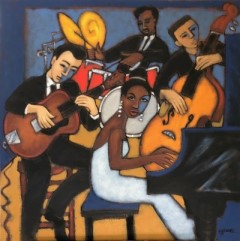
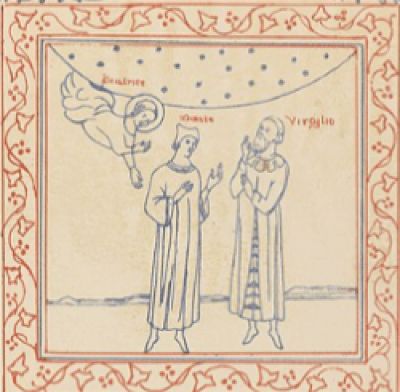
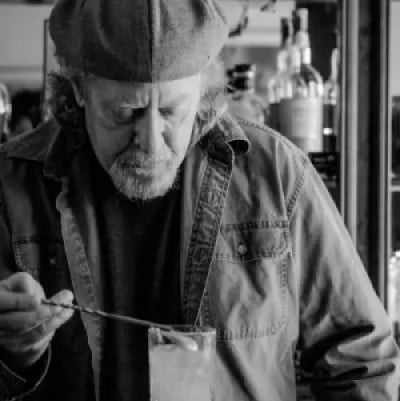


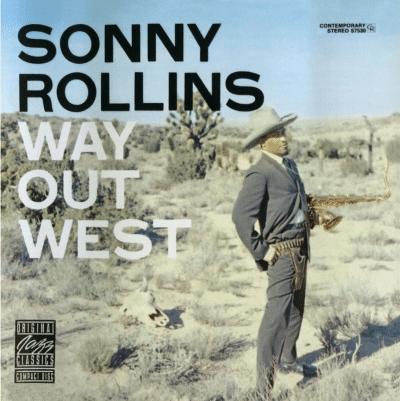
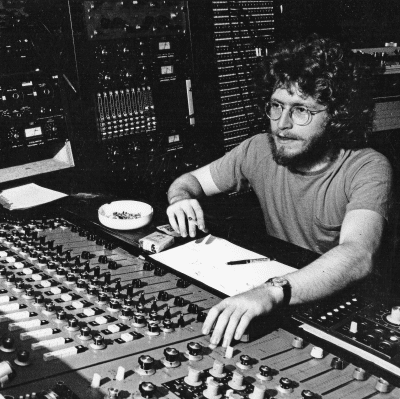
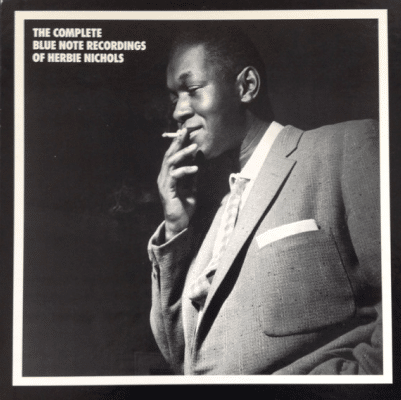
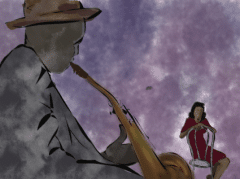



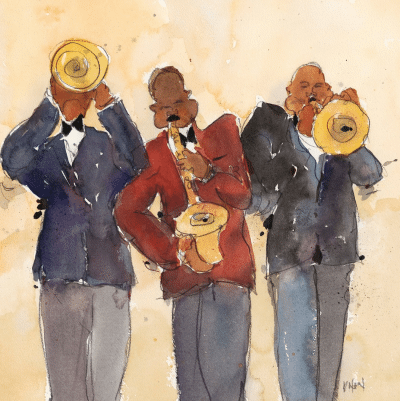
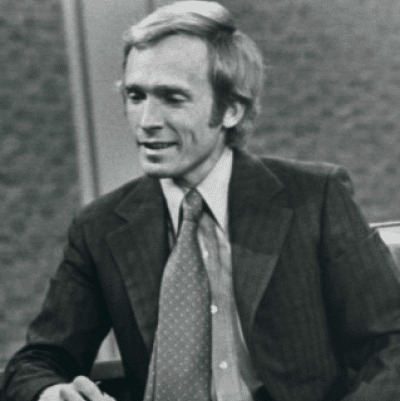



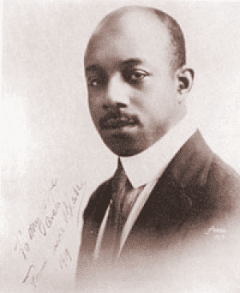



I just learned of this horrible event and from the narrative on Letters and Politics, it seemed as though the white riot was planned and organized in advance rather than simply a spontaneous explosion of emotions. It would follow that the accusations of the young woman on the elevator would likely have been part of the plan.
This is all speculation of course, but I have to wonder what evidence there might be one way or another about that speculation.